 Who: William Lustig is a Bronx-born filmmaker who is currently based in Los Angeles, where he runs film distributor Blue Underground — which specializes in re-releasing classic cult and exploitation films (most of them from the 1960s-80s) on Blu-ray and DVD. Several of those titles belong to New York City’s “Grindhouse” era, during which Lustig began his own filmmaking career. His first two directing credits were adult films, but he made his independent mainstream directorial debut with 1980 horror film, Maniac. Lustig directed Joe Spinell as New York City serial killer “Frank Zito”. Spinell wrote the script, and based Zito on serial killers who had gained notoriety through newspaper coverage during the 1970s — including “Son of Sam” David Berkowitz, who murdered six New Yorkers in 1976-77. One of the film’s location shots was a shotgun murder scene filmed beneath the Verrazano-Narrows Bridge in Brooklyn, near the site of a Son of Sam murder. The high crime rate in New York City during the ’70s informed Lustig’s next film, Vigilante, where a group of factory workers bypass an ineffectual police force to handle local crime prevention themselves — with deadly results. Fred Williamson, who starred in Larry Cohen’s Black Caesar a decade earlier, played the group’s leader, whose opening monologue highlighted very-real fears over New York City’s then-high daily homicide rate and large number of illegal guns. Cohen wrote Lustig’s next feature,
Who: William Lustig is a Bronx-born filmmaker who is currently based in Los Angeles, where he runs film distributor Blue Underground — which specializes in re-releasing classic cult and exploitation films (most of them from the 1960s-80s) on Blu-ray and DVD. Several of those titles belong to New York City’s “Grindhouse” era, during which Lustig began his own filmmaking career. His first two directing credits were adult films, but he made his independent mainstream directorial debut with 1980 horror film, Maniac. Lustig directed Joe Spinell as New York City serial killer “Frank Zito”. Spinell wrote the script, and based Zito on serial killers who had gained notoriety through newspaper coverage during the 1970s — including “Son of Sam” David Berkowitz, who murdered six New Yorkers in 1976-77. One of the film’s location shots was a shotgun murder scene filmed beneath the Verrazano-Narrows Bridge in Brooklyn, near the site of a Son of Sam murder. The high crime rate in New York City during the ’70s informed Lustig’s next film, Vigilante, where a group of factory workers bypass an ineffectual police force to handle local crime prevention themselves — with deadly results. Fred Williamson, who starred in Larry Cohen’s Black Caesar a decade earlier, played the group’s leader, whose opening monologue highlighted very-real fears over New York City’s then-high daily homicide rate and large number of illegal guns. Cohen wrote Lustig’s next feature,  1988’s Maniac Cop, featuring Robert Z’Dar as vengeful undead officer “Matt Cordell”. Motivated by the copy line “You have the right to remain silent… forever”, Lustig approached the film as the fusion of a ’70’s police procedural, Universal monster movie and RKO film noir, with nightfall bringing forth Cordell to prey upon criminals and innocents alike. Lustig has called the 1990 sequel, Maniac Cop 2 his best film. But it presented a production challenge, beginning with a fall shooting schedule that was unseasonably cold and snowy — and including a car chase on the second day of shooting in West New York, NJ, where the local fire department shut down production after the taxi cab in the scene caught fire. Unlike the original Maniac Cop, the sequel was only released in the video market in the U.S., but did have a theatrical run in Europe and Asia. Maniac Cop III: Badge of Silence was also released direct to video in 1993. Lustig had less creative control over this second sequel, which utilized fewer New York-area locations than the prior films, and he now refers to it as “the Canadian tax shelter movie”. Camera In The Sun talked to Lustig about his New York film career, his memories of living in the city during the Maniac era, and some classic films receiving definitive re-releases through Blue Underground.
1988’s Maniac Cop, featuring Robert Z’Dar as vengeful undead officer “Matt Cordell”. Motivated by the copy line “You have the right to remain silent… forever”, Lustig approached the film as the fusion of a ’70’s police procedural, Universal monster movie and RKO film noir, with nightfall bringing forth Cordell to prey upon criminals and innocents alike. Lustig has called the 1990 sequel, Maniac Cop 2 his best film. But it presented a production challenge, beginning with a fall shooting schedule that was unseasonably cold and snowy — and including a car chase on the second day of shooting in West New York, NJ, where the local fire department shut down production after the taxi cab in the scene caught fire. Unlike the original Maniac Cop, the sequel was only released in the video market in the U.S., but did have a theatrical run in Europe and Asia. Maniac Cop III: Badge of Silence was also released direct to video in 1993. Lustig had less creative control over this second sequel, which utilized fewer New York-area locations than the prior films, and he now refers to it as “the Canadian tax shelter movie”. Camera In The Sun talked to Lustig about his New York film career, his memories of living in the city during the Maniac era, and some classic films receiving definitive re-releases through Blue Underground.

What was the media coverage of the “Son of Sam” murders like in New York City in 1976-77?
I remember it very clearly. When I talk to audiences, I talk about the ’70’s as being the “Golden Age” of serial killers. Because today, the serial killers tend to be these people who we find out is some white trash in a trailer park who buries a girl in the backyard, or they do something horrendous. And it’s terrible, but somehow in the ’70s you had some really colorful people. Remember, Son of Sam was  writing to Jimmy Breslin at the New York Daily News, so we were hooked on getting the newspaper. There wasn’t CNN. We were grabbing the newspaper off the newsstand to read about the latest installment of the Son of Sam. You know, we take for granted today the 24-hour news cycle. But back then, it was like getting the early edition of the Daily News, and hearing the latest about this killer on the loose, and following on a day-by-day basis, and only getting those tidbits that you could read in a newspaper. And it was exciting. It was suspenseful. I can put on the news now, and I’ll hear every little update about [Christopher Dorner] on the loose. You know, there’s no suspense. There’s no interest. I’ll tell you, it was like living in a pulp novel. That’s what the ’70’s were like with all these serial killers.
writing to Jimmy Breslin at the New York Daily News, so we were hooked on getting the newspaper. There wasn’t CNN. We were grabbing the newspaper off the newsstand to read about the latest installment of the Son of Sam. You know, we take for granted today the 24-hour news cycle. But back then, it was like getting the early edition of the Daily News, and hearing the latest about this killer on the loose, and following on a day-by-day basis, and only getting those tidbits that you could read in a newspaper. And it was exciting. It was suspenseful. I can put on the news now, and I’ll hear every little update about [Christopher Dorner] on the loose. You know, there’s no suspense. There’s no interest. I’ll tell you, it was like living in a pulp novel. That’s what the ’70’s were like with all these serial killers.

They thought the Son of Sam had a fetish for women with a certain color hair. And women were going to their hair salons to change the color of their hair to make them a less-likely target. I even remember going to a newsstand one day, and the guy’s looking at me and says, “Boy, you look just like the sketch on the cover.” It was that kind of a thing. I mean, it was really interesting.

What were some of your cinematic influences while directing Maniac?
 The films that I was thinking about were like a cross between Texas Chainsaw Massacre — I thought a lot about that — and Honeymoon Killers. I mean, there are bits and pieces from other movies where I look at the scenes and I remember what I was thinking when I shot them. I remember the opening title sequence being inspired by the movie Man on the Roof, a Swedish movie. I mean, it’s crazy, but these are the things that were in there. The scene where the girl is in the apartment, and she’s taking a bath, and the camera’s sort of lurking through the halls, I kept thinking about Repulsion. So I look at the movie, and I can feel the greatest hits of the different scenes and what I was thinking. You know, the scene in the subway was to me Texas Chainsaw Massacre. I know it in no way reflects it, but that’s what I was thinking. As far as the rhythm of the shots, and the movement and everything, I was thinking of Texas Chainsaw Massacre. The look and feel of the picture was very much in our thoughts, always. We wanted to create this feeling of the gritty underbelly of New York.
The films that I was thinking about were like a cross between Texas Chainsaw Massacre — I thought a lot about that — and Honeymoon Killers. I mean, there are bits and pieces from other movies where I look at the scenes and I remember what I was thinking when I shot them. I remember the opening title sequence being inspired by the movie Man on the Roof, a Swedish movie. I mean, it’s crazy, but these are the things that were in there. The scene where the girl is in the apartment, and she’s taking a bath, and the camera’s sort of lurking through the halls, I kept thinking about Repulsion. So I look at the movie, and I can feel the greatest hits of the different scenes and what I was thinking. You know, the scene in the subway was to me Texas Chainsaw Massacre. I know it in no way reflects it, but that’s what I was thinking. As far as the rhythm of the shots, and the movement and everything, I was thinking of Texas Chainsaw Massacre. The look and feel of the picture was very much in our thoughts, always. We wanted to create this feeling of the gritty underbelly of New York.
How much did Williamson’s monologue in Vigilante reflect your own perceptions of NYC crime?
The ’70s were dangerous. I would even say the early ’80’s were. I don’t think the city really started to turn around until really the ’90s. I mean, under Dinkins it was a nightmare. What an idiot he was. But certainly Fred Williamson’s sentiment was very much that of the ’70’s reactionary period of people just getting fed up with crime on the streets, and being afraid in their neighborhoods.
 The movie Vigilante, although it was rooted in a then-contemporary New York, I thought of it more like a Western. At this point in time, people were fighting gangs. It was the rise of the gangs in the boroughs, and people were frightened of them, and still are.
The movie Vigilante, although it was rooted in a then-contemporary New York, I thought of it more like a Western. At this point in time, people were fighting gangs. It was the rise of the gangs in the boroughs, and people were frightened of them, and still are.
Maniac and Vigilante were 100% New York. I think there’s an energy, there’s a feel, and the kind of actors that were in Vigilante are really only found in New York. You know, the supporting cast is a real New York cast. [The lead] Bob Forster was a replacement. Originally it was Tony Musante — who has since forgiven me, by the way. I knew Fred Williamson. I grew up with Fred Williamson films, and I was thrilled to work with him. A friend of mine hung out at a bar that Fred Williamson was a regular at in Los Angeles. I was kicking around ideas for the supporting role, and my friend suggested Fred, and I flipped over it. And the fact that Fred did it, I was just like “Wow, that’s great!” Fred had tremendous star charisma. I haven’t seen Black Caesar in quite a while, but what I remember from the film is it had a real street feel to it, in the same way that Super Fly did. It didn’t feel “Hollywood”. It felt authentic. I think it had an interesting story which was straight out of the ’30s Warner Brothers films. And it had Fred, who was a great role model.
What did Larry Cohen bring to the Maniac Cop films?
Larry Cohen’s a great storyteller. His love of movies came from him watching ’30s and ’40s films out of Hollywood — particularly film noir, B movies. He really has a great love and affection of the kind of quirky storytelling that you found in those kinds of movies. So he really, really knows how to write a story. The lottery ticket scene in Maniac Cop 2 was a brilliant idea. That was all Larry. Again, he has a comedic element to him where he finds the humor in juxtaposing different things in different ways.
The truth is, Larry really had zero involvement in production. I think of all the Maniac Cop films, he showed up a total of about two hours on the first Maniac Cop, just to say “Hi.” But he really had no involvement with the films, beyond the script stages. There was a now-defunct film laboratory in New York called TVC. The president of the company was kind of a New York street guy. He liked Larry and I, and kind of thought that we were two peas in a pod, and decided to arrange for us to have breakfast together. 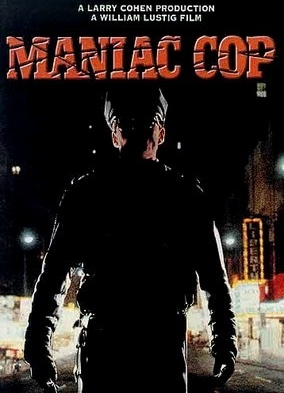 We met, and I was a Larry Cohen fan, so there was no arm twisting on my end. And it was a few years after that when we met again, and the idea of Maniac Cop came out of that next lunch. Really, Maniac Cop came out of the idea that Larry said, “How come you never made a sequel to Maniac?” And I said, “Well, I just never thought the movie was something you can make a sequel of.” At the time, there were successful films like Beverly Hills Cop, Robocop, a few others. So he just blurted out, “What about Maniac Cop?” And it just struck me as being such a great title. Then we kicked around some ideas, and there had been a copy line for Dirty Harry in Scandinavia, which was to the effect of “You have the right to remain silent… forever.” Why don’t we put that with Maniac Cop? Nobody’s heard that copy line in this country. And that was it.
We met, and I was a Larry Cohen fan, so there was no arm twisting on my end. And it was a few years after that when we met again, and the idea of Maniac Cop came out of that next lunch. Really, Maniac Cop came out of the idea that Larry said, “How come you never made a sequel to Maniac?” And I said, “Well, I just never thought the movie was something you can make a sequel of.” At the time, there were successful films like Beverly Hills Cop, Robocop, a few others. So he just blurted out, “What about Maniac Cop?” And it just struck me as being such a great title. Then we kicked around some ideas, and there had been a copy line for Dirty Harry in Scandinavia, which was to the effect of “You have the right to remain silent… forever.” Why don’t we put that with Maniac Cop? Nobody’s heard that copy line in this country. And that was it.
When Larry was making those Black Caesar films, I think it was before the city made getting permits easy. So when I did Maniac, Vigilante and the Maniac Cop films, getting a permit wasn’t difficult. And they were very cooperative. I never had a problem getting permits. There was the Mayor’s Office of Film, and they were throwing the doors open, because remember the city was teetering on bankruptcy. They were trying to parlay the success of movies like The French Connection, that kind of shed a new light on the city, and filming in the city. So they worked it so that getting permits was much easier.
The opening of Maniac Cop was in Soho. That was on Prince and Thompson Street, I believe. And the bar, by the way, is still there. My doctor is diagonal from where that bar is on Prince Street. So I see the bar and it brings back memories of Maniac Cop. Of course, Vesuvio’s is kind of there, but it’s a different bakery now. It’s kind of a hipster bakery, but it used to be an old-fashioned Italian bakery. And one of my favorite record shops, Rocks In Your Head 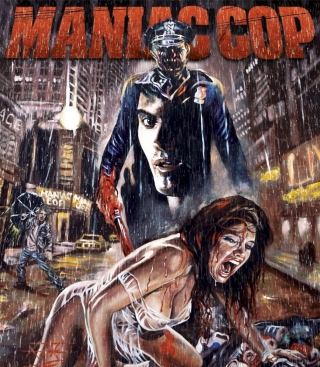 is gone — which is in the backdrop of Maniac Cop’s opening. Anyway, the scene where she’s in the park was shot near the Midtown Tunnel. The scene where the musician is coming out of The Bitter End is very obvious. It’s on Bleecker Street. Then he turns the corner, and he’s on Thompson. That was shot in the West Village, and so was the shot with the guy running down the street handcuffed. And then except for some establishing shots we ran around and grabbed, and the helicopter footage, the rest was shot in Los Angeles. The ending at the pier was in L.A. I didn’t do it because I wanted to. I did it because New York is expensive. Especially when you bring people in and put them up in hotels. It becomes costly. We did get to shoot a lot more in New York on the second Maniac Cop. I think we shot for 2 1/2 weeks in New York, and the rest was shot in Los Angeles. You know, New York’s an expensive place, and a little bit more difficult to get around. It’s logistically a little more challenging. But L.A. is becoming that as well. So, it’s not as easy as it used to be to shoot in Los Angeles.
is gone — which is in the backdrop of Maniac Cop’s opening. Anyway, the scene where she’s in the park was shot near the Midtown Tunnel. The scene where the musician is coming out of The Bitter End is very obvious. It’s on Bleecker Street. Then he turns the corner, and he’s on Thompson. That was shot in the West Village, and so was the shot with the guy running down the street handcuffed. And then except for some establishing shots we ran around and grabbed, and the helicopter footage, the rest was shot in Los Angeles. The ending at the pier was in L.A. I didn’t do it because I wanted to. I did it because New York is expensive. Especially when you bring people in and put them up in hotels. It becomes costly. We did get to shoot a lot more in New York on the second Maniac Cop. I think we shot for 2 1/2 weeks in New York, and the rest was shot in Los Angeles. You know, New York’s an expensive place, and a little bit more difficult to get around. It’s logistically a little more challenging. But L.A. is becoming that as well. So, it’s not as easy as it used to be to shoot in Los Angeles.
Did you ever get shaken down for payoffs while shooting on location around New York City?
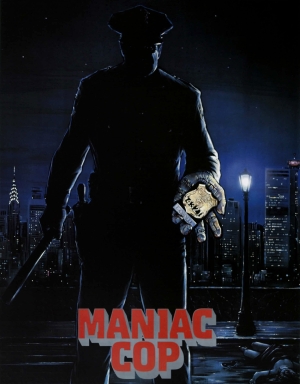 The only time I ever got shook down, that I considered it to be quasi-criminal, was actually in Los Angeles when I was shooting the first Maniac Cop. I got shaken down by the gangster teamsters. I mean, they didn’t appear to be gangsters. If you were casting them, they would not reflect the look of a gangster. But what they did was straight out of the gangster playbook. They created a false pretense to protest my set. At that time, I was probably the lowest-budgeted film shooting, and I couldn’t afford teamsters. And the next day, they went on location where I was shooting the exterior of the motel where Bruce Campbell’s wife is killed. And I had to give them a payoff of something like between $7500-8000. But when I did it, I had to go to some office in North Hollywood, and it was right out of Hoffa. It had those faded wood panel walls that were all the rage in people’s basements in the ’60s. But here it was in the late ’80s, and there were these faded wood walls with the pastel portraits of teamsters, either living or in jail or wherever. They had the “Hall of Fame” with the old-fashioned pastel drawings. And I was sitting in like a darkened office. I don’t know, I think it was made deliberately intimidating, with some asshole white trash motherfucker behind the desk. And I ultimately had to agree to pay them money to get rid of them.
The only time I ever got shook down, that I considered it to be quasi-criminal, was actually in Los Angeles when I was shooting the first Maniac Cop. I got shaken down by the gangster teamsters. I mean, they didn’t appear to be gangsters. If you were casting them, they would not reflect the look of a gangster. But what they did was straight out of the gangster playbook. They created a false pretense to protest my set. At that time, I was probably the lowest-budgeted film shooting, and I couldn’t afford teamsters. And the next day, they went on location where I was shooting the exterior of the motel where Bruce Campbell’s wife is killed. And I had to give them a payoff of something like between $7500-8000. But when I did it, I had to go to some office in North Hollywood, and it was right out of Hoffa. It had those faded wood panel walls that were all the rage in people’s basements in the ’60s. But here it was in the late ’80s, and there were these faded wood walls with the pastel portraits of teamsters, either living or in jail or wherever. They had the “Hall of Fame” with the old-fashioned pastel drawings. And I was sitting in like a darkened office. I don’t know, I think it was made deliberately intimidating, with some asshole white trash motherfucker behind the desk. And I ultimately had to agree to pay them money to get rid of them.
What was your early film industry experience like within New York’s 70’s adult industry?
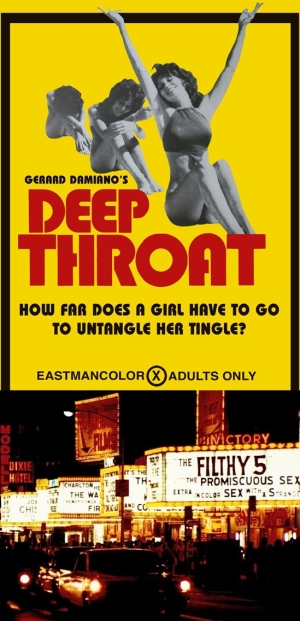 The adult film industry in the ’70s was boomtown. Deep Throat was making millions, and there was a lot of interest in seeing adult films in theaters. They were made in 35-millimeter, and there was no differential between making an adult film, and making a horror film or any other kind of movie. In fact, the first adult film I worked on, the crew had just come off the film Super Fly. They were telling tales about making Super Fly, that they had just literally finished the week before they started working on this adult film. A lot of times, the crews kind of went as groups. They worked as teams. Some of them were in the union, but they would work non-union. They’d do it under different names. That first adult film was called Hypnorotica, and it had something to do with a psychiatrist and hypnotizing people, and going back into things that fucked them up. And of course, it all had a sexual beat in there of some kind. But that’s about as much as I remember. I do remember doing something so absurd, and that was having to build the interior of a Vietnamese hut in an office on Broadway. It was supposed to be a guy having a flashback to Vietnam, and somehow we’re in a hut in an office at 1600 Broadway. I made a little bit of a living doing that, not much. I directed two adult films, but worked on probably another half-dozen more. It was a small independent world in the film industry in New York. And as far as the casts, I think probably every one I worked on had Jamie Gillis. He would show up in practically ever one of them. You know, there was this one casting person, and I thought about this the other day for some reason. Her name was Dorothy Palmer. And nobody knows about this, but she was the casting person for adult movies on the East Coast. Her office was at 250 West 57th Street, the Fisk Building, between Broadway and 8th Avenue. And she was an older lady. I mean, I was in my early-20s at the time, so everyone looked old. She was probably at the time in her 40s or early-50s. But there was nothing about her, if you met her on the street, that told you she was the adult casting person. But she was.
The adult film industry in the ’70s was boomtown. Deep Throat was making millions, and there was a lot of interest in seeing adult films in theaters. They were made in 35-millimeter, and there was no differential between making an adult film, and making a horror film or any other kind of movie. In fact, the first adult film I worked on, the crew had just come off the film Super Fly. They were telling tales about making Super Fly, that they had just literally finished the week before they started working on this adult film. A lot of times, the crews kind of went as groups. They worked as teams. Some of them were in the union, but they would work non-union. They’d do it under different names. That first adult film was called Hypnorotica, and it had something to do with a psychiatrist and hypnotizing people, and going back into things that fucked them up. And of course, it all had a sexual beat in there of some kind. But that’s about as much as I remember. I do remember doing something so absurd, and that was having to build the interior of a Vietnamese hut in an office on Broadway. It was supposed to be a guy having a flashback to Vietnam, and somehow we’re in a hut in an office at 1600 Broadway. I made a little bit of a living doing that, not much. I directed two adult films, but worked on probably another half-dozen more. It was a small independent world in the film industry in New York. And as far as the casts, I think probably every one I worked on had Jamie Gillis. He would show up in practically ever one of them. You know, there was this one casting person, and I thought about this the other day for some reason. Her name was Dorothy Palmer. And nobody knows about this, but she was the casting person for adult movies on the East Coast. Her office was at 250 West 57th Street, the Fisk Building, between Broadway and 8th Avenue. And she was an older lady. I mean, I was in my early-20s at the time, so everyone looked old. She was probably at the time in her 40s or early-50s. But there was nothing about her, if you met her on the street, that told you she was the adult casting person. But she was.
How has the NYC moviegoing experience changed since you first went to a city movie theater?
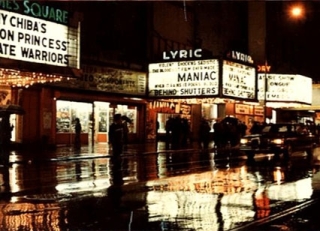 One of the things that saddens me is that when I grew up in New York, I had an abundance of places to see different kinds of movies. There were multiple repertory theaters in each area of New York where they’d show double features on a daily basis. The Bleecker Street Cinema, the Thalia Theater uptown, the Carnegie Hall Cinema — it went on and on. There were so many theaters out there showing both recent and older Hollywood films. Mostly Hollywood and art house films. And you had 42nd street, which was showing new and old films. And you had all of these places where you could go see movies on a big screen. That was the incredible part of it. You know, today you have multiplexes in neighborhoods playing the same fucking movies. If I wanna go to Union Square, if I wanna go to Kip’s Bay, if I wanna go to the Regal in Battery Park, they’re all showing the same movies. There’s very few revival houses around. Very few. And they make a big deal about it. Film Forum is one. To some degree, IFC, Anthology. But it’s not on a routine basis where I can go on a Monday night and see a double feature of Kurosawa films, or something. It just doesn’t exist, and it’s sad.
One of the things that saddens me is that when I grew up in New York, I had an abundance of places to see different kinds of movies. There were multiple repertory theaters in each area of New York where they’d show double features on a daily basis. The Bleecker Street Cinema, the Thalia Theater uptown, the Carnegie Hall Cinema — it went on and on. There were so many theaters out there showing both recent and older Hollywood films. Mostly Hollywood and art house films. And you had 42nd street, which was showing new and old films. And you had all of these places where you could go see movies on a big screen. That was the incredible part of it. You know, today you have multiplexes in neighborhoods playing the same fucking movies. If I wanna go to Union Square, if I wanna go to Kip’s Bay, if I wanna go to the Regal in Battery Park, they’re all showing the same movies. There’s very few revival houses around. Very few. And they make a big deal about it. Film Forum is one. To some degree, IFC, Anthology. But it’s not on a routine basis where I can go on a Monday night and see a double feature of Kurosawa films, or something. It just doesn’t exist, and it’s sad.
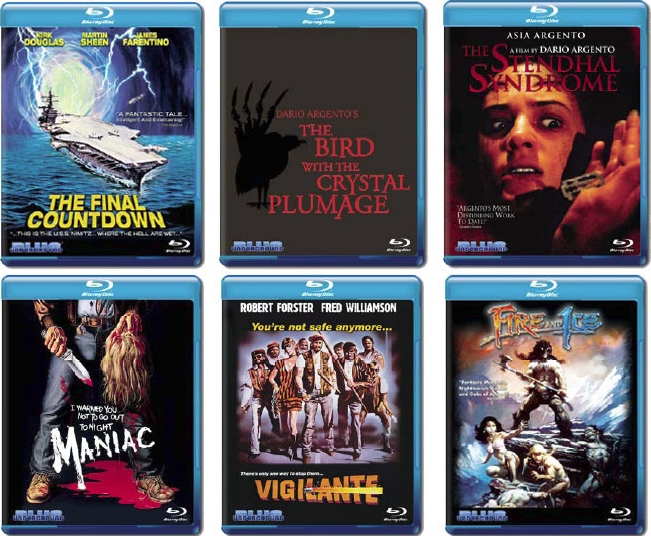
How did you come to work at Blue Underground?
I started working for Jerry Douglas when he wanted to turn Anchor Bay Entertainment from a VHS company into a DVD company. I was working independently for what was supposed to be 4-6 months, and it turned out to be like 4 years. And then I got to point where I was producing about 8 DVD projects a month. And the people who owned Anchor Bay wanted to sell it. So they stopped acquiring new pictures, with the hopes of selling the company, which they eventually did. So I had a group of people that were really kind of a well-oiled machine, and we had the contacts to acquire product. So I turned our energy into starting Blue Underground. In broad strokes, it was my intent to be able to continue to bring out films that I love that had not really been given respectable releases.  Really high quality transfers with interesting bonus material. I kind of thought of Blue Underground as being the “pop culture Criterion Collection”. Right now, we have about 154 films under license. I would say about 50% are horror, and then the rest would be action, erotic and then Westerns. Mid-1960s would be the earliest.
Really high quality transfers with interesting bonus material. I kind of thought of Blue Underground as being the “pop culture Criterion Collection”. Right now, we have about 154 films under license. I would say about 50% are horror, and then the rest would be action, erotic and then Westerns. Mid-1960s would be the earliest.
One of them is La Scorta. I think it’s one of the great thrillers. It’s a great Italian film, directed by Ricky Tognazzi, about the bodyguards who protect the prosecutors in Sicily, and their fight against the mafia. Really good movie. Very exciting.
We were actually just reaching out to Roberta Findlay, because we’re putting out Snuff again as a Blu-ray. We have a lot of interesting extras to put on it. You know, what appeals to me is the mystique of the film. And what interests me is how [Allan Shackleton] took what was in the news about snuff movies, and created controversy around this awful movie by shooting some additional footage at the end. Also, him hiring protestors and the whole marketing campaign the guy did. All that stuff interested me. I think the movie itself is so bad, it’s unbelievable. But now we’re gonna give it to audiences in high definition. And in fact, I was just going over a scene in the movie with my associate. We were talking about color correction in a day-for-night scene, and I was telling him “Make sure you can balance the shots.” It was this really badly shot day-for-night footage. It was shot in South America, except for the end. The end was shot in Chelsea.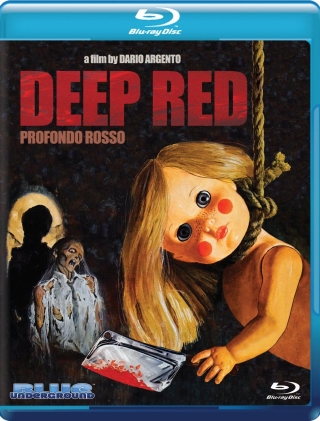
Deep Red was one I was very proud to acquire. Cat o’ Nine Tails. You know, the Argento films. I think they’re great. Lucio Fulci films like Zombie. These films are all classics that I grew up on.
You have to understand that in the ’60’s there were a lot of Hollywood films that were made in Italy for economic reasons. And so there was a lot of films that I’d seen that were based in Italy, in Rome and those places. It’s funny, I think my first trip to Milan, Italy I had read in a newspaper while I was there that Profondo Rosso was being shown at a theater in a certain part of Milan. One night, I got a taxi to take me to the theater so I could see the uncut version. Even though it was in Italian, I wanted to see the uncut version, because I had heard the Italian version was longer than the English version. And I remember going to this huge cold theater with wooden seats to see the uncut Italian version. That can tell you how big a fan I was. It was about 20 minutes longer, and it really wasn’t very good footage either. I don’t think it added anything to the movie, and it was wise that it was cut.
3 Comments